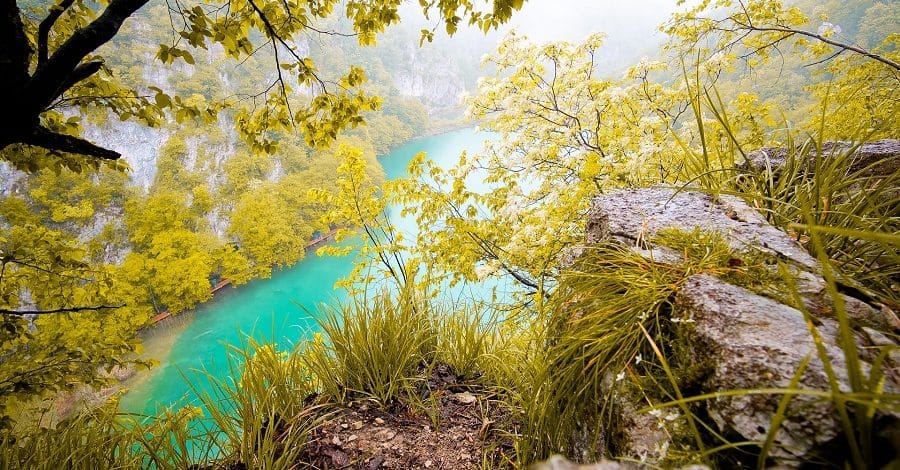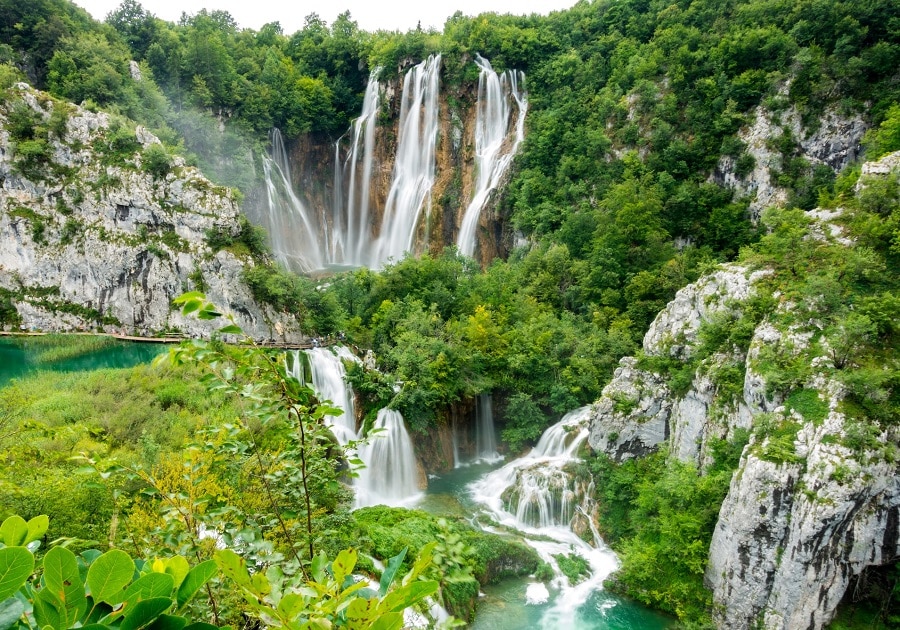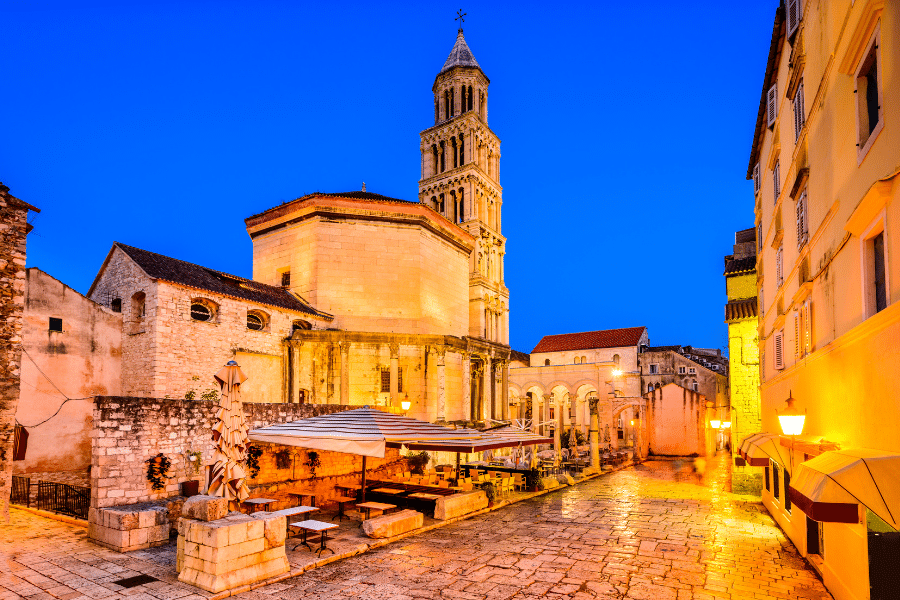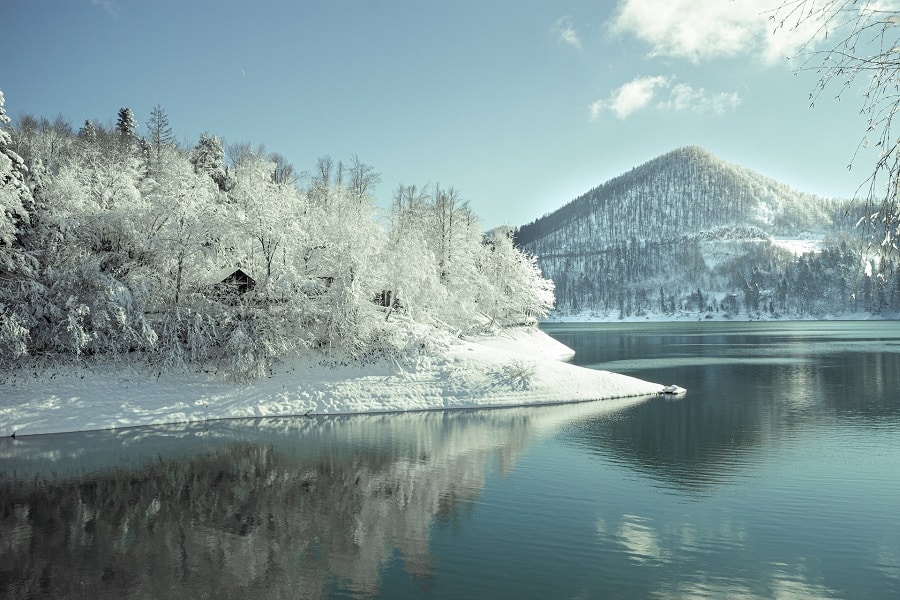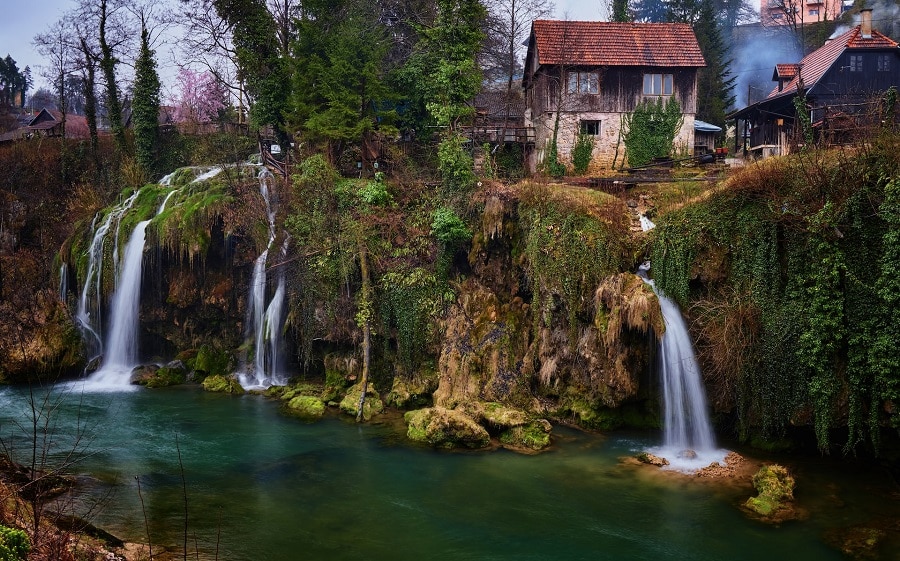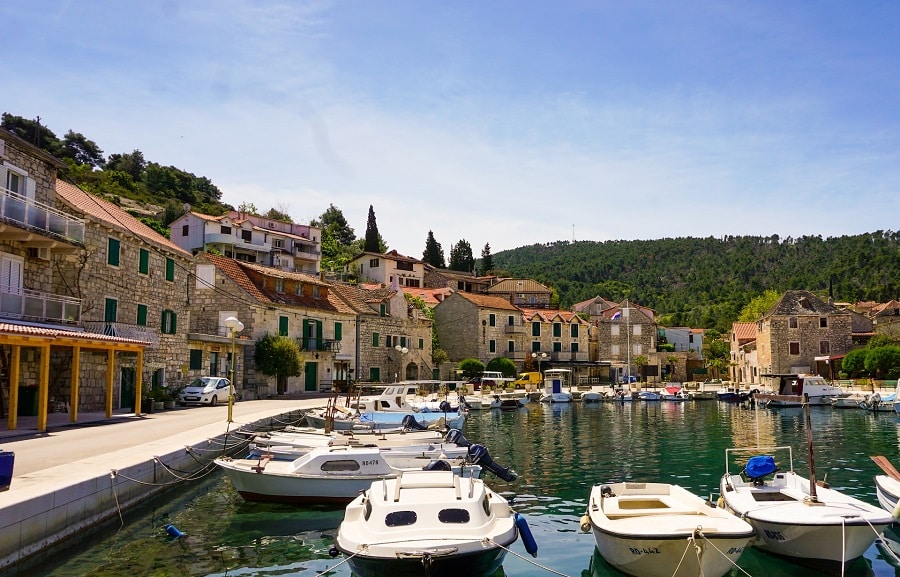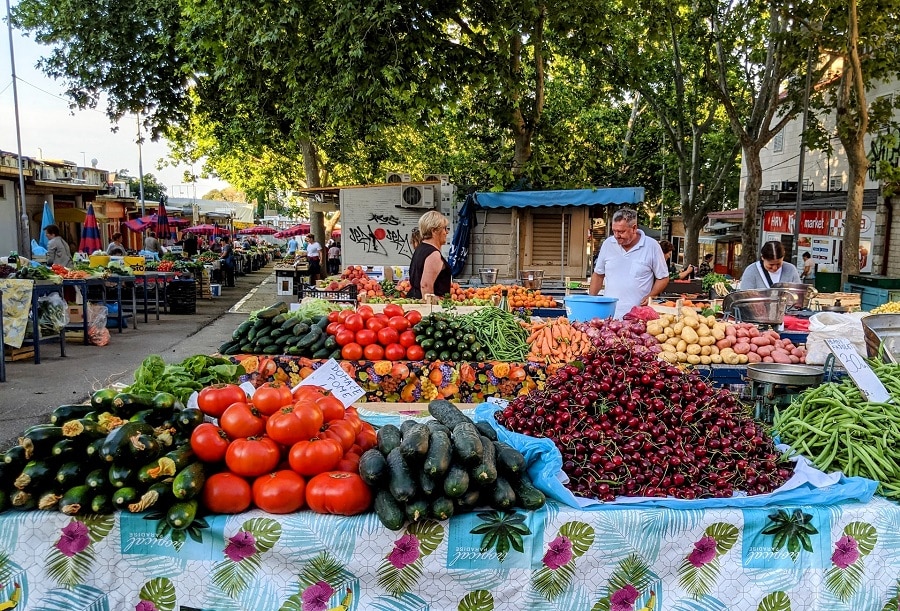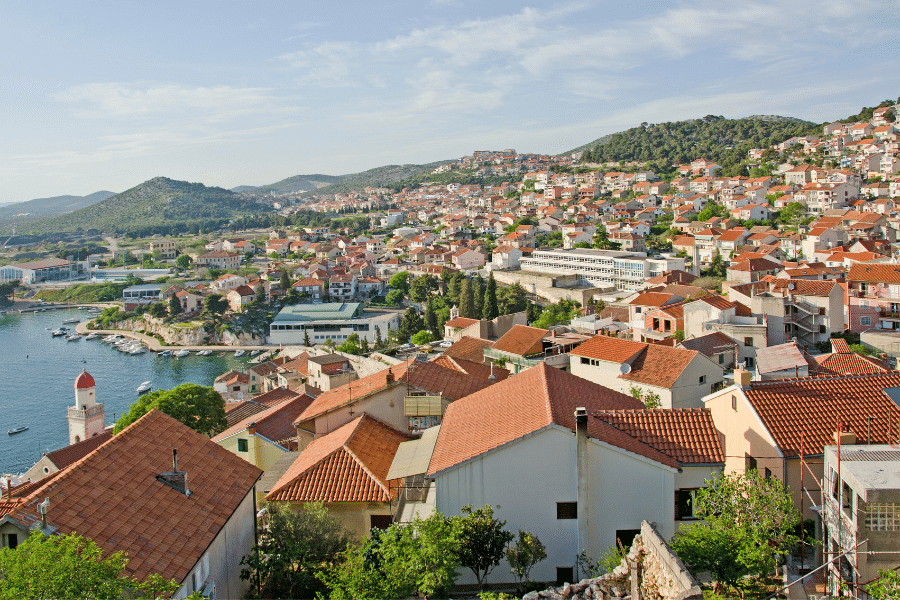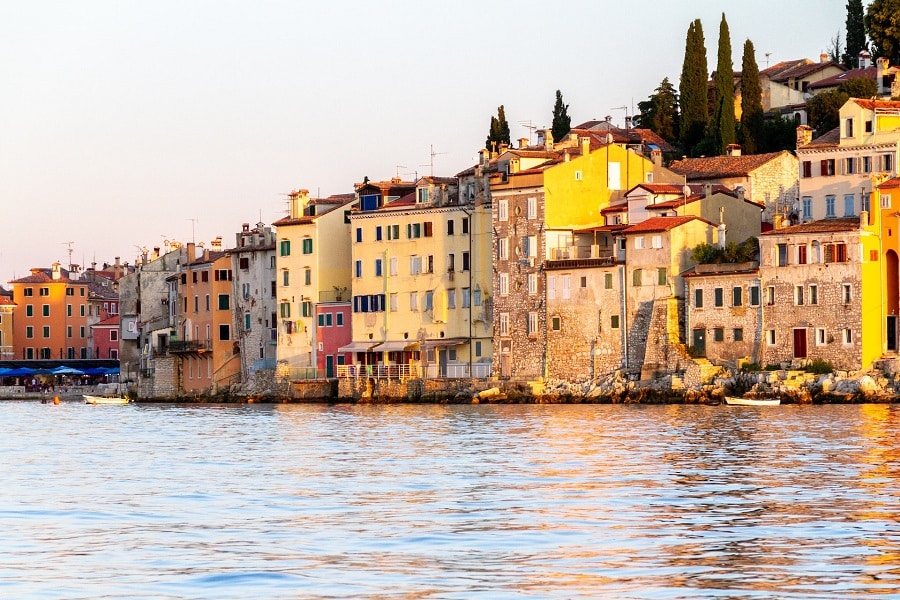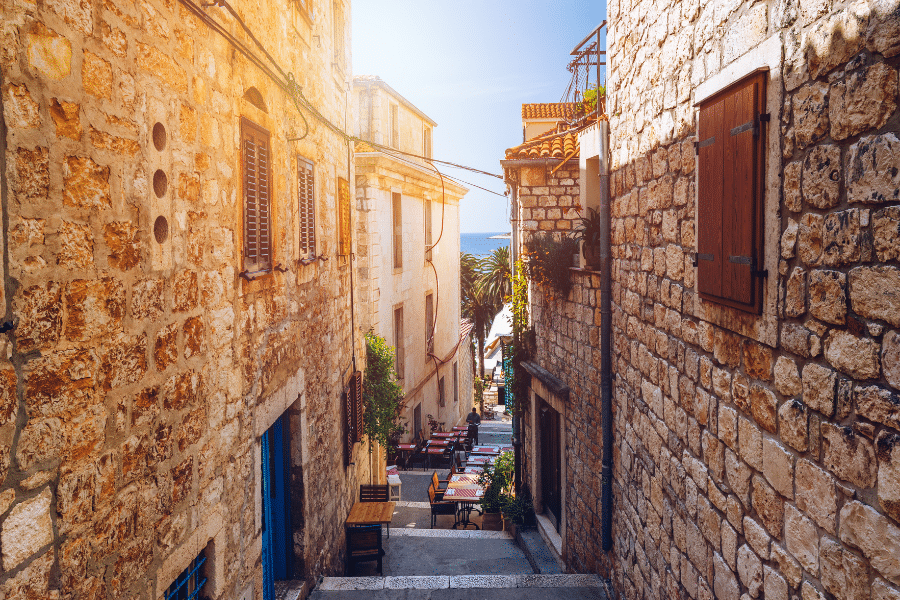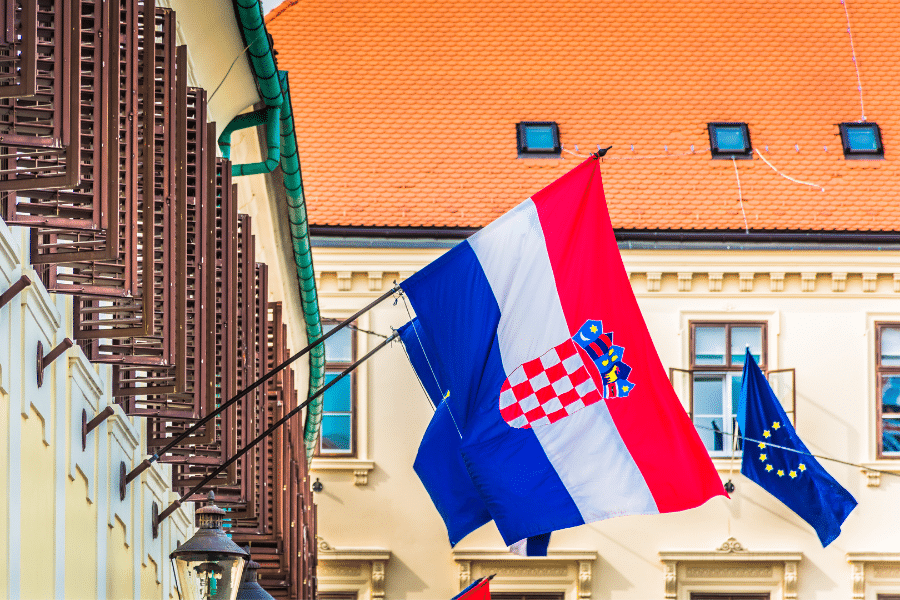Croatia is an excellent place to live for many reasons, one of which is the great weather and climate. The weather in Croatia is dictated by its temperate climate with four distinct seasons: spring, summer, fall, and winter. Annual temperatures in Croatia range from the 30s to the 90s Fahrenheit, according to timeanddate.com, depending on the region of Croatia that you are in.
There are approximately 200 days of sunshine per year – making it another wonderful perk of living in Croatia. Southern Croatia experiences milder winters, with temperatures in Dubrovnik or Split rarely falling below 50 degrees, while in Northern Croatia you get to see some snow in the winter.
Precipitation also varies throughout Croatia; generally speaking, the coast receives less rain than inland areas do because mountains shelter Croatia’s coastline from prevailing winds that carry moisture from the Adriatic Sea inland where it then falls as rain or snow.
Croatia’s climate by region
Some regions can get quite a bit of rainfall annually, while other parts of Croatia receive very little precipitation. The mix of rain and sunshine act in unison to create Croatia’s lush green national parks like the famous Plitvice Lakes, Krka and Brijuni Islands.
April through June tend to be some of the wettest months while July and August are usually drier due to lower humidity levels and more prevalent wind patterns off the Adriatic Sea bringing drier air masses ashore. December through February make up Croatia’s coldest months when temperatures drop below freezing occasionally overnight, but warm back up during daytime hours providing residents here unique opportunities to enjoy both skiing in Croatian winters as well as swimming at its beaches come summertime.
The inland Croatian climate differs a little from the coastal climate, so it’s dificult to present an overall description of the country as a whole. For this article, we’ve looked at the typical weather statistics for Coastal Croatia, along with a general description of what it is like in the rest of the country.
The weather in Croatia by month
January
- Average Temperature: 48°F (9°C)
- Temperature Range: 44°F (7°C) – 52°F (11°C)
- Precipitation: 3.19 inches
The average temperature on the Adriatic Coast of Croatia in January is 44°F (7°C) to 52°F (11°C). This can be considered cold weather, so you should take precautions and dress accordingly. Temperatures at night can drop below freezing, so it’s important to have a warm coat or jacket available. You’ll also want to have long pants and closed-toe shoes to protect against the cold and possible rain or snow.
In general, Croatians experience light precipitation during this month including mostly rain showers mixed with occasional snow flurries. However, since temperatures are on the cooler side, any accumulation of wet snow could make conditions slick. It’s always a good idea to be prepared with an umbrella or rain jacket when venturing outdoors.
February
- Average Temperature: 48°F (9°C)
- Temperature Range: 43°F (6°C) – 53°F (12°C)
- Precipitation: 3.55 inches
February in Croatia is a month of chilly, wet weather. On the coast, the average temperature range is between 43 and 53 degrees Fahrenheit, so you’ll need to dress warmly. A heavy coat, scarf, and hat are required attire if you plan on spending any time outdoors.
Precipitation-wise, February brings significant rain and snowfall to the country – be prepared for both! If you’re traveling during this month, pack your bags accordingly and make sure to check the forecast before heading out. Wearing layers is always a good idea in Croatia during February. You never know when the weather will take a turn and the temperature can drop throughout the day.
A comfy sweater with a waterproof jacket should do the trick in most cases. And don’t forget your boots! Even if there isn’t snow on the ground, puddles are commonplace thanks to all that rain. When it comes to sunny days (yes, they do happen occasionally), make use of them by getting out and exploring all that Croatia has to offer. The mountainous regions are simply spectacular when covered in snow.
March
- Average Temperature: 53°F (12°C)
- Temperature Range: 48°F (9°C) – 58°F (14°C)
- Precipitation: 2.91 inches
The average temperature in Croatia during March is 48-58 degrees Fahrenheit. This time of year, it is cold with occasional precipitation. It is advised to wear layers and weather-appropriate clothing such as a coat, scarf, and hat when venturing outdoors. Boots are also a good choice to protect your feet from the cold and wet weather, as the ground is thawing this time of year. When planning activities, be sure to check the forecast in advance as conditions can change rapidly this time of year, and it can be quite rainy.
April
- Average Temperature: 60°F (16°C)
- Temperature Range: 55°F (13°C) – 66°F (19°C)
- Precipitation: 2.68 inches
April in Croatia’s coastal towns is typically mild and warming up, with average temperatures ranging from the mid fifties to mid sixties Fahrenheit. Precipitation is also common during this month, so be sure to pack an umbrella or raincoat!
When dressing for the weather, layers are always a good idea – they’ll help keep you warm while still being versatile enough to adjust to changing conditions throughout the day. A light jacket or sweater will suffice for most days, but don’t forget a scarf and hat if you plan on spending any significant time outdoors.
May
- Average Temperature: 68°F (20°C)
- Temperature Range: 61°F (16°C) – 74°F (23°C)
- Precipitation: 2.42 inches
The average temperature on the Croatian coast during May is between 60 and 75 degrees Fahrenheit. The weather starts to warm up nicely, with some precipitation. You should dress in layers, pack a light jacket or sweater as well as an umbrella just in case.
The amount of rainfall varies throughout the month, but you can expect at least a few days of showers. May is a great time to be in Croatia if you want to avoid the heat and crowds of the summertime tourist season.
This shoulder season sees mild and sunny weather that’s perfect for exploring the country’s many outdoor attractions. Seaside towns are in bloom and the vegetation is luscious.
June
- Average Temperature: 75°F (24°C)
- Temperature Range: 68°F (20°C) – 83°F (28°C)
- Precipitation: 2.76 inches
The temperature in Croatia during June ranges from 58 to 75 degrees Fahrenheit. The warmer weather is a refreshing change from the winter cold, and it’s perfect for spending time outdoors. However, you’ll want to bring a light jacket or sweater for evenings when the temperature dips. Precipitation is minimal during this month, so you won’t have to worry about getting caught in the rain.
July
- Average Temperature: 81°F (27°C)
- Temperature Range: 74°F (23°C) – 89°F (32°C)
- Precipitation: 0.94 inches
The average temperature in Croatia during July is a hot, ranging between 75 and 90 degrees Fahrenheit, making it the perfect destination to enjoy some summer sun. However, as with any country located near a large body of water like the Adriatic Sea, there can be significant humidity levels present so make sure to drink plenty of fluids and take breaks if you start to feel overheated.
Precipitation-wise, you’re likely to see afternoon thundershowers from time to time but nothing too heavy that will ruin your plans for the day. As for what type of clothing to pack – since temperatures will hover around 80 degrees throughout most of the day, light and airy fabrics are key in order not to overheat.
One of the best things about living in Croatia in the summer is that local markets are exploding with delicious locally-grown fruits and vegetables.
August
- Average Temperature: 81°F (27°C)
- Temperature Range: 73°F (23°C) – 88°F (31°C)
- Precipitation: 1.19 inches
The temperature in Croatia during August can range from the 70s to upper 80s Fahrenheit, which is hot. This time of year, the weather is usually sunny and dry, with occasional showers or thunderstorms. During this month, you should wear lightweight, breathable clothing and stay hydrated by drinking plenty of water.
The possibility of showers or thunderstorms increases towards the end of August, so it’s a good idea to keep an umbrella handy. If you’re in Croatia during this month, be sure to pack sunscreen and hats as well, since the sun can be quite strong. Although evenings can be cooler than days, temperatures usually stay above 60 degrees Fahrenheit even at night.
September
- Average Temperature: 72°F (22°C)
- Temperature Range: 66°F (19°C) – 78°F (26°C)
- Precipitation: 2.82 inches
The weather on Croatia’s coast during September is very pleasant and sunny, with average temperatures ranging from 66-78 degrees Fahrenheit. The sea water is still warm and great for swimming, but the tourist crowds are starting to dissipate, which makes this month a great time of the year to be in Croatia.
In terms of precipitation, September is one of the drier months, so you won’t have to worry too much about rain or storms. However, it’s always a good idea to pack a light jacket or sweater for evenings and early mornings, when the temperature can dip a bit lower.
Overall, this time of year is perfect for exploring Croatia’s many outdoor attractions – from hiking and biking in its stunning national parks, relaxing on one of its beautiful beaches, or sightseeing its charming small towns.
October
- Average Temperature: 64°F (18°C)
- Temperature Range: 58°F (14°C) – 69°F (21°C)
- Precipitation: 2.54 inches
The temperatures in Croatia during October range from 58 and 69 degrees Fahrenheit, making it a cool but pleasant time of year. You’ll want to take care of what you wear during this month, as the weather can be unpredictable.
Precipitation is common in October, so make sure you have an umbrella or raincoat handy. October is a great time to go out for strolls in the park, take road trips to admire the pretty fall colors and enjoy some cooler weather. Just be sure to pack appropriately for the opportunity of rain.
November
- Average Temperature: 57°F (14°C)
- Temperature Range: 52°F (11°C) – 61°F (16°C)
- Precipitation: 3.78 inches
In November, the average temperature in Croatia’s coastal towns is in the 50s Fahrenheit. The precipitation during this month is relatively low, so you won’t need to worry too much about rain or snow. However, it’s still a good idea to dress warmly and in layers since the weather can be quite chilly at times.
A light jacket or sweater should suffice for most days, but you may want to consider bringing a heavier coat if you’re planning on spending any prolonged period outdoors.
December
- Average Temperature: 50°F (10°C)
- Temperature Range: 46°F (8°C) – 54°F (12°C)
- Precipitation: 3.38 inches
The Croatian coast in December is quite cold, with temperatures typically ranging roughly from 40 to 55 degrees Fahrenheit. Precipitation during this month can vary but usually includes some rain or snow.
To stay comfortable during this chilly time of year, be sure to dress in layers and wear warm clothing such as a coat, scarf, and hat. If you live in Northern Croatia or mountainous regions, you will experience plenty of snow. The climate in the Southern tip of the country is quite mild and pleasant even this time of year, you won’t see freezing temperatures very often.

